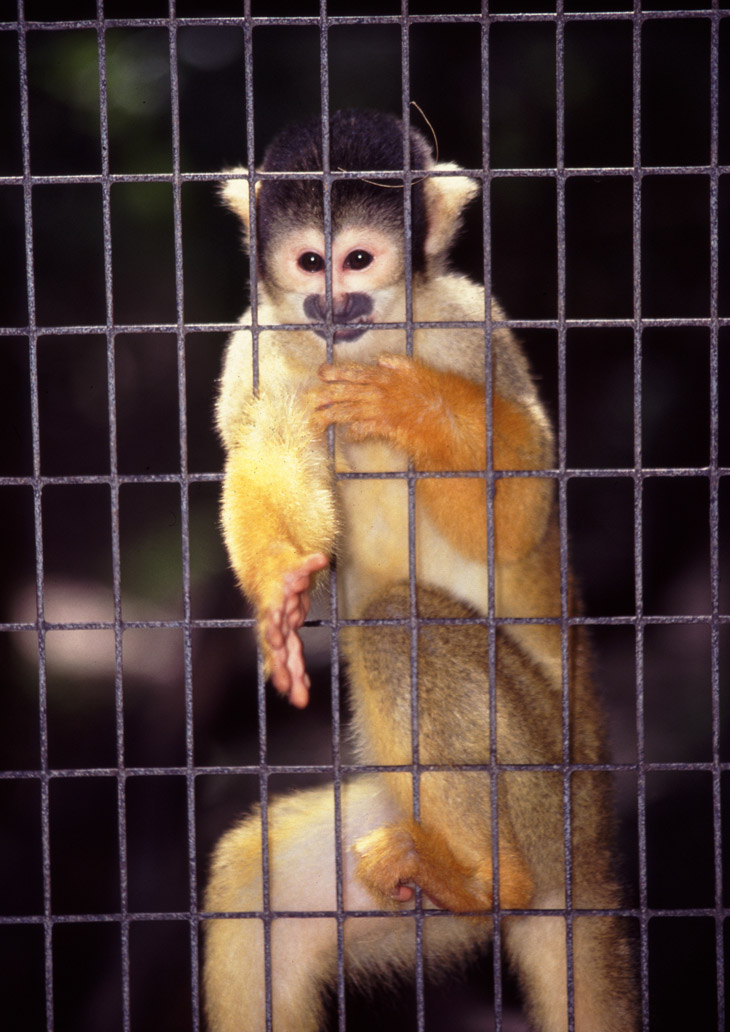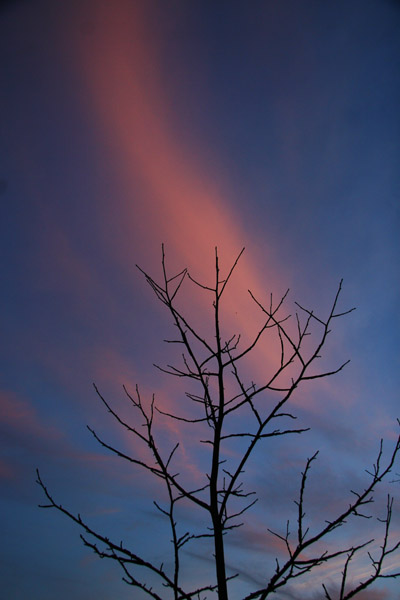 You should read that title in Bender’s voice, and if I have to explain that, well… let’s just say I’m disappointed in you.
You should read that title in Bender’s voice, and if I have to explain that, well… let’s just say I’m disappointed in you.
Regardless, what it means is, after a long dry spell where photography was almost nonexistent and even meaningless philosophical posts just weren’t happening, I finally started to get back into the swing of things yesterday, with nice weather and something to shoot. Even a student outing the other day didn’t net anything remarkable (even by my standards,) but I might be starting to make up for it now. We’d had some early warm weather that provoked some of the trees to bud out, then a cold snap that made them regret it, actually causing some of the leaves to wilt a bit – call it an Indian winter if you will. Now, perhaps, spring proper is starting.
You couldn’t tell it from the tree I used for this sunset shot, but that’s okay with me – I think it works better with the bare branches. I thought we might get some serious colors as the sun went down, but this is about the extent of it; you just can’t predict things like that, or at least I can’t. The sky might look promising, then peter out right before the sun goes down, or maybe the sun will get blocked by distant clouds which prevents it from illuminating the high-altitude clouds. The best you can do is be prepared and hope.
However, while I was over at the pond ready to take advantage of the conditions if they panned out, I found my second snake of the year; the first was a little worm snake in the driveway, but this one was a bit more impressive.
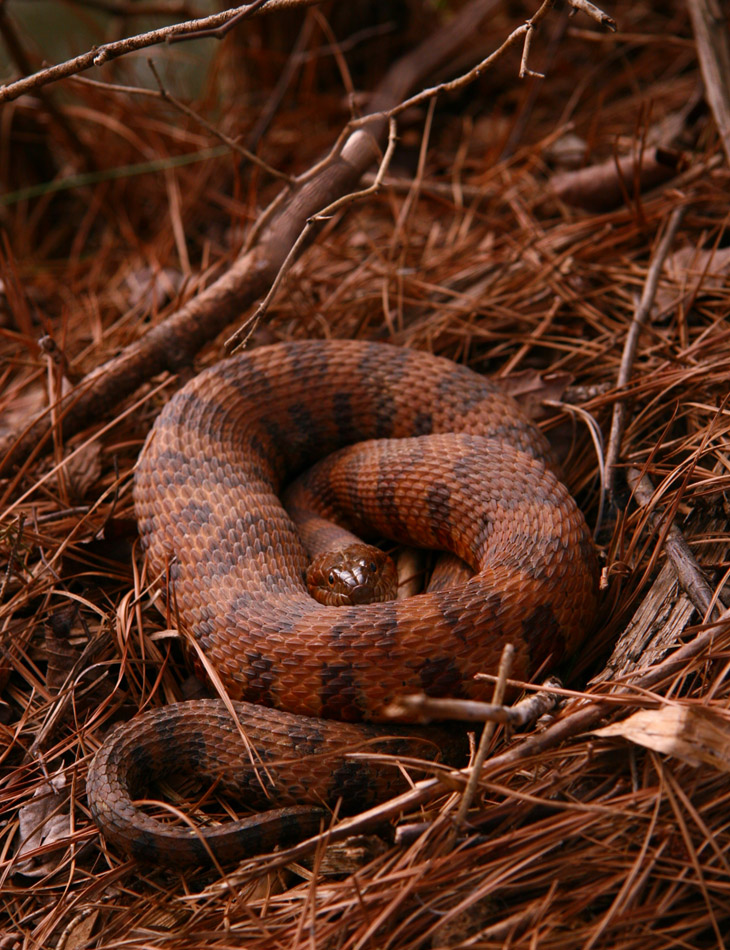
This northern water snake (Nerodia sipedon) never even twitched as I drew close, and I suspect it was fast asleep; without eyelids, there’s no solid indication, but the behavior is often a clue. Coiled where it could catch the late afternoon sun, it was likely warming itself up in preparation for the evening hunt, even though it seems like it’s been doing just fine in the food department. At the widest part of the body it was perhaps 6cm across – not quite the thickness of a wrist, but close enough to give that impression, while overall length was likely less than a meter. They don’t have ears but are good about picking up vibrations from the ground, though I’ve long been in the habit of walking softly when I’m out shooting, so it remained undisturbed as I knelt down just inside striking distance. I wasn’t concerned; should it feel threatened, it was far more likely to hurtle into the pond immediately behind it than take a shot at me, but I’ve been bitten by them before anyway.
During the day while working in the yard, I had spotted some portential subjects and vowed to come back at nightfall when I could tackle them with dedication. One of which, another magnolia green jumping spider, had wandered off and couldn’t be found, but in its place I present this unidentified wasp just chillin’ on the gardenia bush.
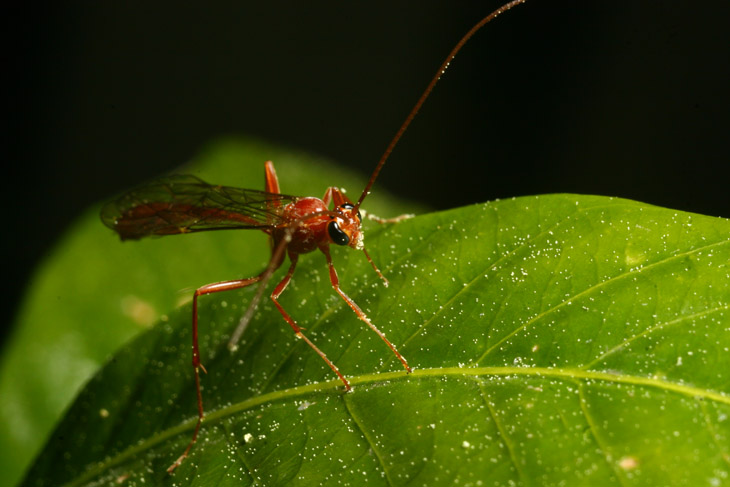
It is that season, the time when the pollen from the longneedle pines gets all over everything, visible here at greater magnification than normal; most times it appears as dust at best. Even though we’d gotten rid of a couple of the pines in the yard last year, there are still way too many in the immediate area to even see a reduction in the chartreuse patina so typical of North Carolina for a couple of weeks. More indications of this will be along shortly.
In the afternoon I had also found two green treefrogs lurking in the downspout stubs left in place when the flow had been diverted into the rain barrels, and knew they would venture out in the evening. One of them had disappeared entirely, but another had shown up nearby, so I had two to work with.
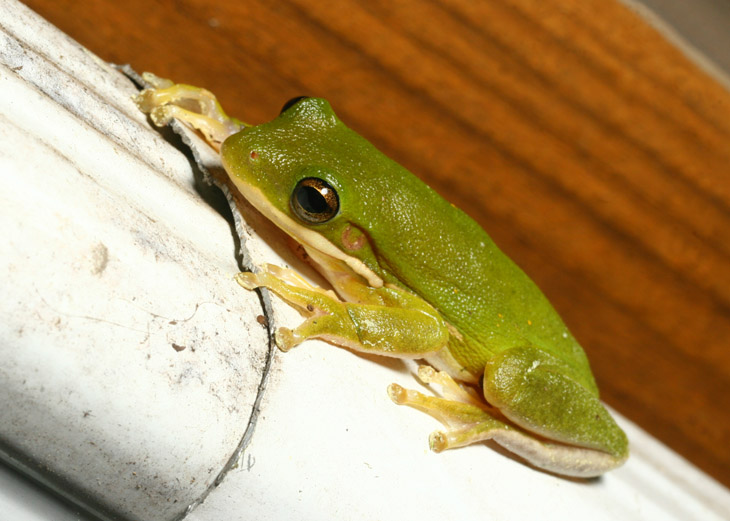
I’d achieved similar photos last year, which might be the last time I’d seen them (it’s likely these are a couple of the same frogs from that post,) and I’d remarked then that I was pleased to see them making their homes in the yard. Last spring had been heralded, at least as far as I was concerned, by the reappearance of the Copes grey treefrogs, but this year it’s the green treefrogs (Hyla cinerea) that serve as the indication. Well, a combination, actually, but I get ahead of myself.
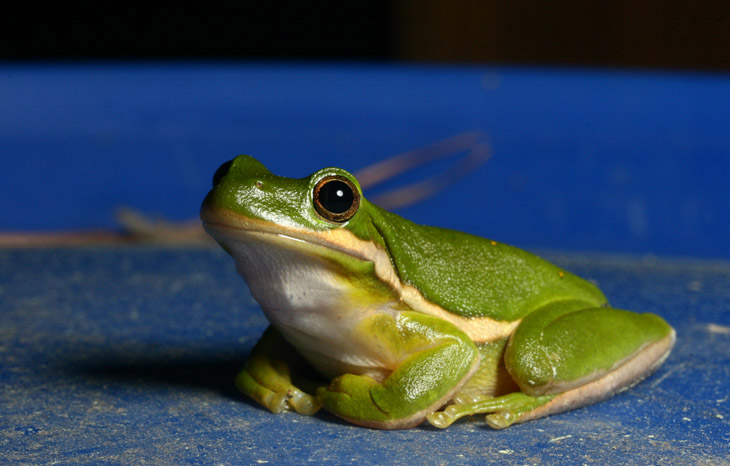
As I was just leaning in and locking focus, this one had lifted a foreleg and swiped something from its eye (probably pollen,) and I just missed getting that shot, which would have been more dynamic than I usually see and photograph them. The pose is still nice, but there’s only so many times you can shoot it, you know? And it would have been better, from a nature photographer’s perspective, to have it on something more natural-looking than the brilliant blue barrel…
Going around the front of the house, the black rainbarrel also sported a frog, this time a Copes grey treefrog (Hyla chrysoscelis.) Crouching low in the residual water on the top gave it a distorted, flattened appearance, and unlike the green treefrogs (who didn’t seem to care,) this one was well aware of my presence and crouched even lower to try and escape attention.
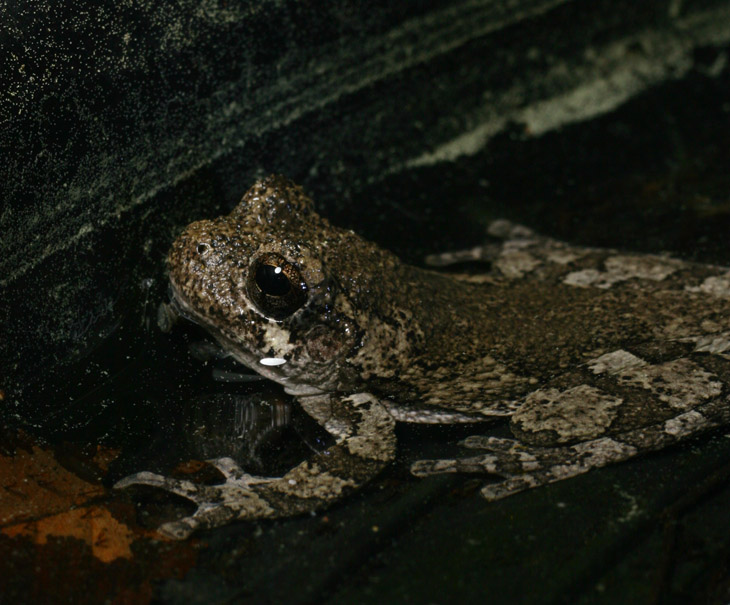
Returning some twenty minutes later, this one had scampered off, perhaps into the neighboring bush where there was plenty of cover. As I type this early the next morning, it’s still 14°c (57°f) out there, so perhaps these frogs are still able to stir up something to eat.

I probably should know what this is – it was likely planted by us, and I might even have featured pics of the same species previously here, but right now I can’t remember and am not going to bother looking for it. Suffice to say that a handful of flowers have peeked out this season, but these had almost escaped my attention. As I went in to do some detail shots (this is still at night, by the way, though the flash gave it a daylight appearance,) I noticed something subtle on one of the blooms, which is the final indication that things are now going Al’s way, because we’re not only talking bugs, but icky predatory behavior.
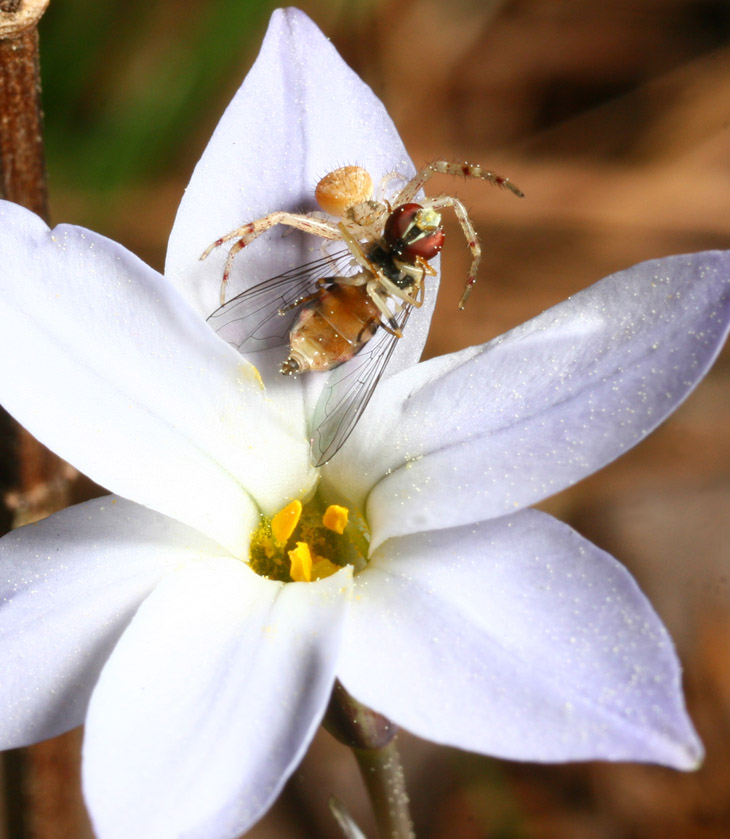
This crab spider knew what it was doing, finding a choice flower as it came into bloom and lying in wait. The unlucky hoverfly was only about 6mm in length, so you know I’m going in close for this, which gave a curious impression of a loving embrace, an illicit and forbidden interspecies romance taking place in the still of the night. Okay, I probably need to get out more.
And I should be now, because these are my signs of spring, and I can finally start posting more pics. Whether I will or not shall remain to be seen…






















































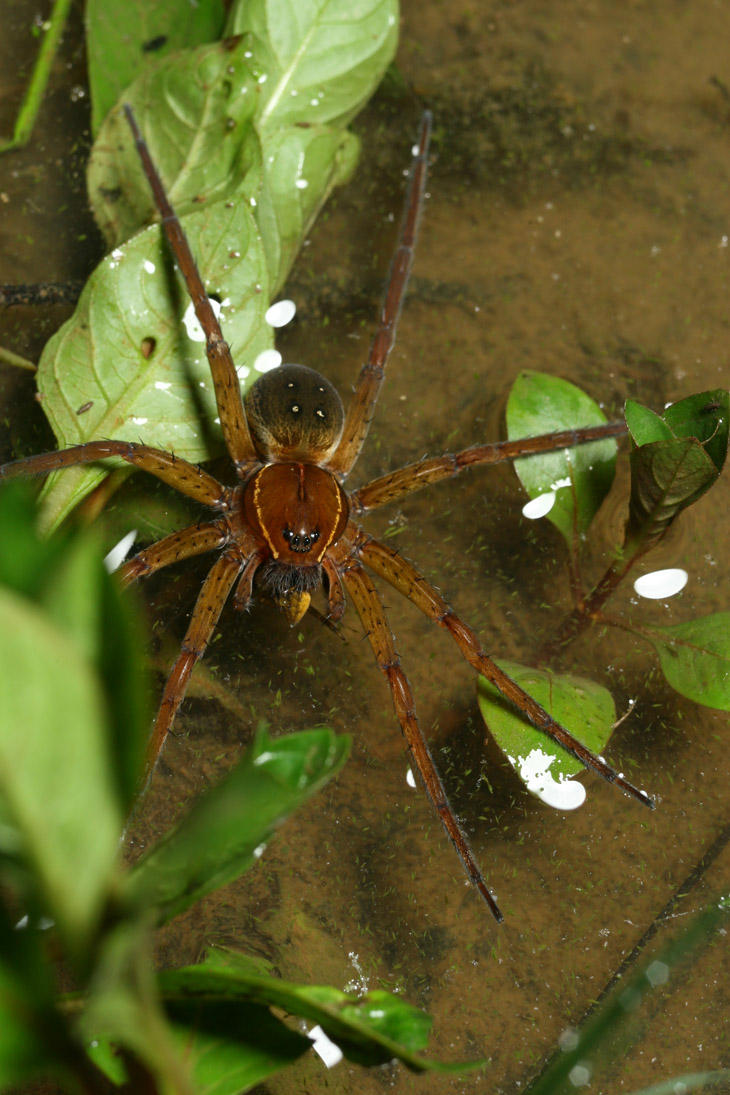
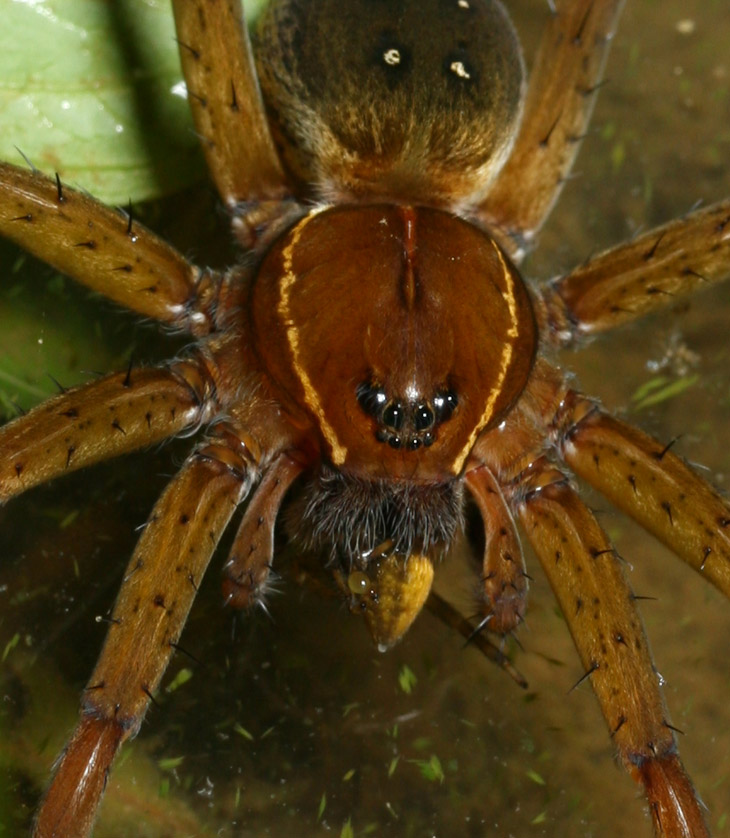


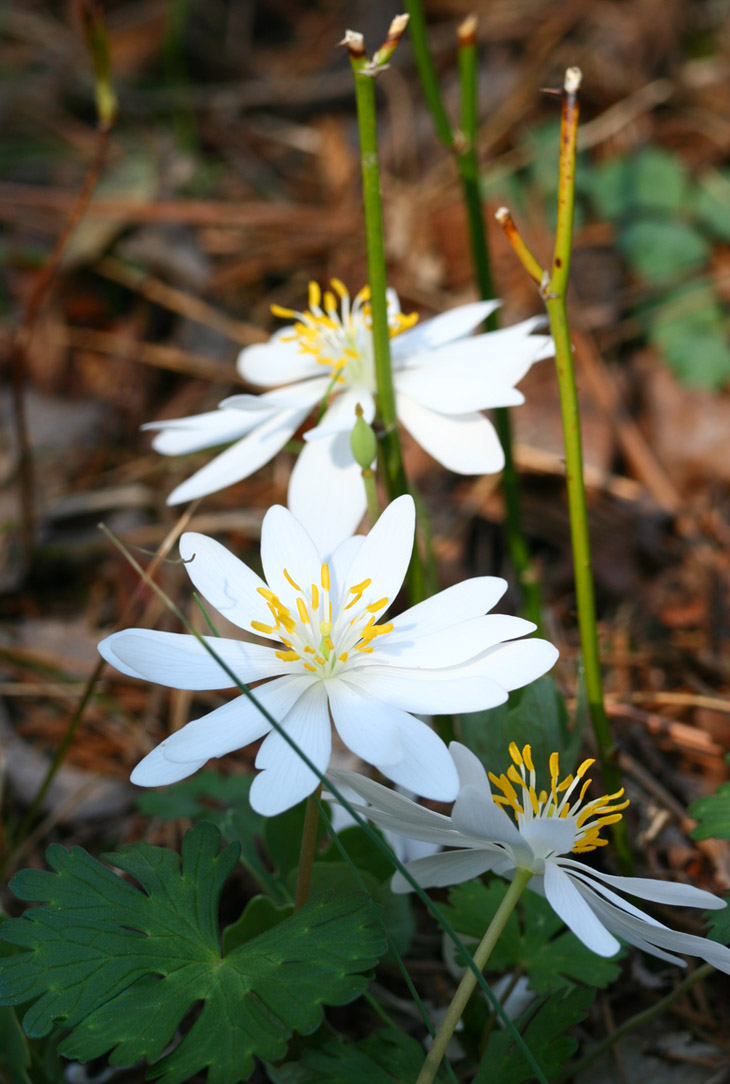
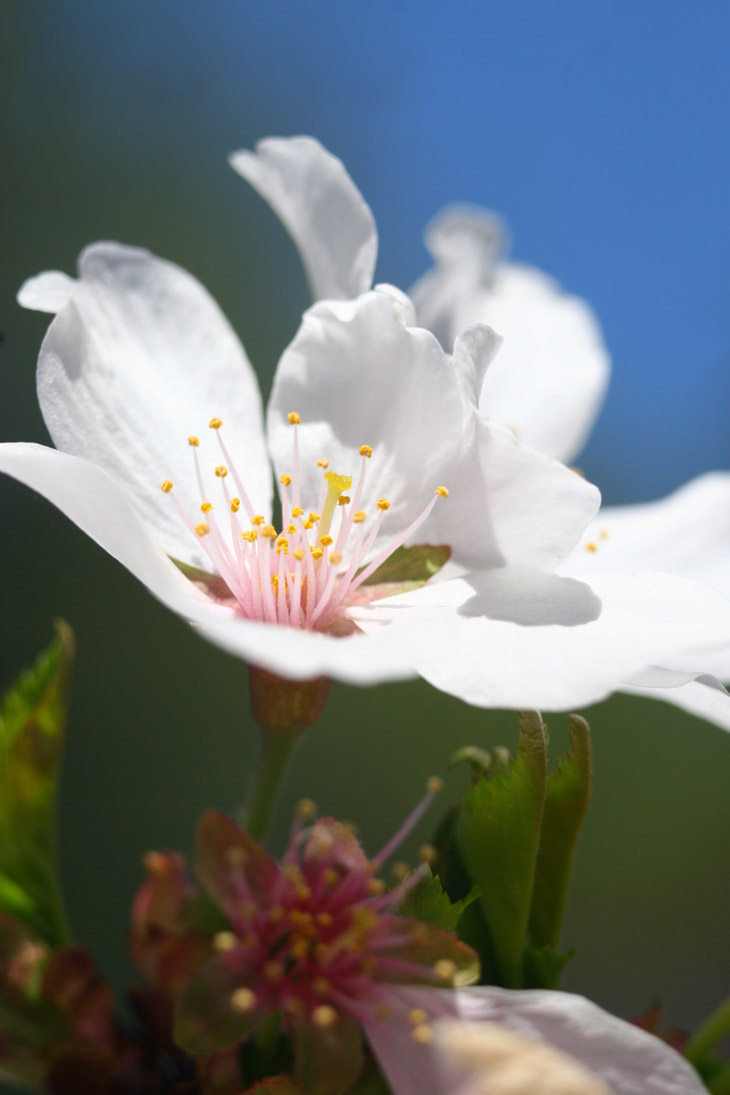
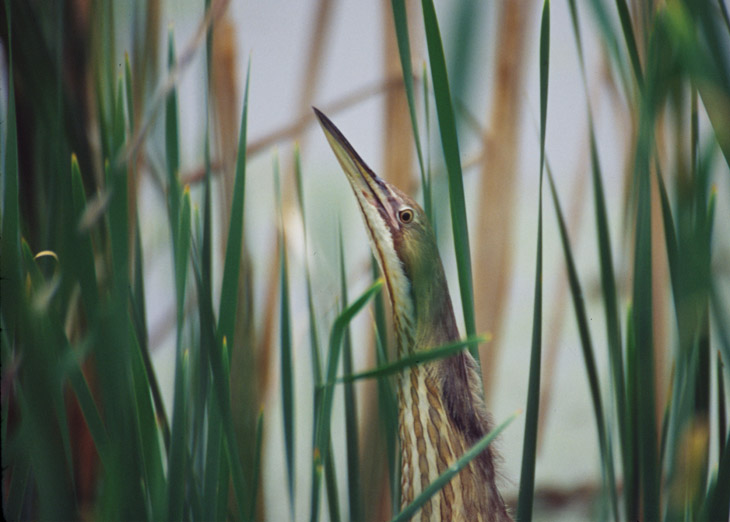
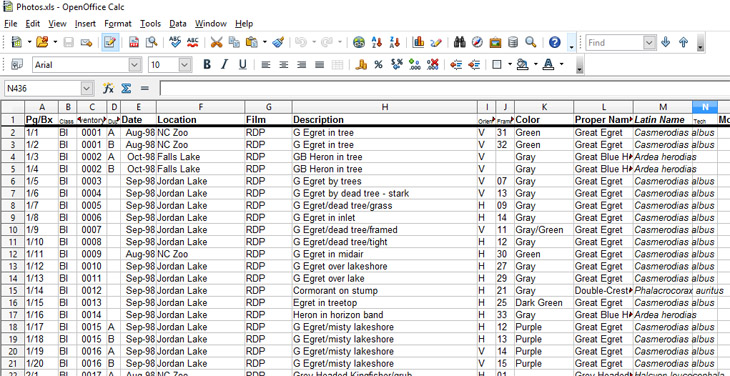
 And then, just recently, I picked up a Rebel T2i body solely for the option of doing video work, and once again, it works with the RC-1, even though the model has now been discontinued and is supplanted by the RC-6. Even more usefully, it will trigger video recording (this has to be activated within the menu,) so it will come in useful for the high magnification macro work where the camera will be locked onto a tripod to avoid inducing motion sickness from the viewer – I will be able to start and stop recording without touching/wiggling the camera. So yeah, welcome back!
And then, just recently, I picked up a Rebel T2i body solely for the option of doing video work, and once again, it works with the RC-1, even though the model has now been discontinued and is supplanted by the RC-6. Even more usefully, it will trigger video recording (this has to be activated within the menu,) so it will come in useful for the high magnification macro work where the camera will be locked onto a tripod to avoid inducing motion sickness from the viewer – I will be able to start and stop recording without touching/wiggling the camera. So yeah, welcome back!